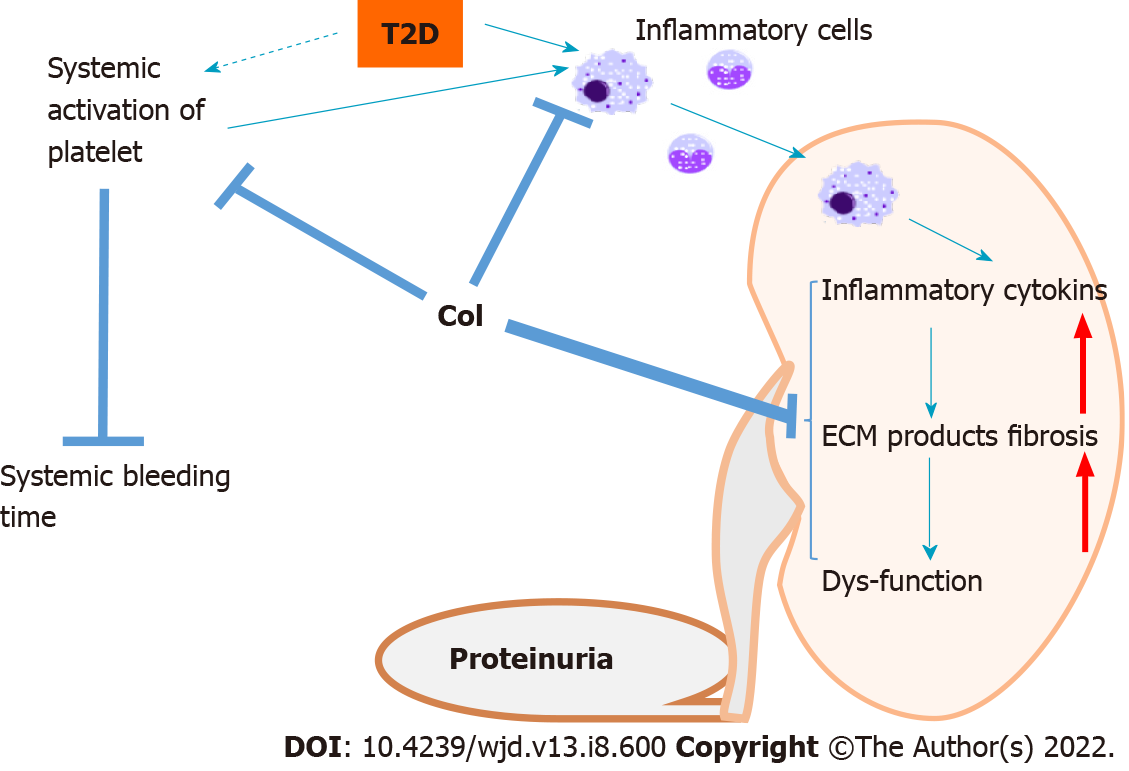Copyright
©The Author(s) 2022.
World J Diabetes. Aug 15, 2022; 13(8): 600-612
Published online Aug 15, 2022. doi: 10.4239/wjd.v13.i8.600
Published online Aug 15, 2022. doi: 10.4239/wjd.v13.i8.600
Figure 7 Outline of the potential mechanisms whereby clopidogrel ameliorates defects in renal structure and function in db/db mice.
Diabetes is associated with the activation of platelets, predisposing toward systemic thrombosis, which is reflected in a shorter bleeding time. Diabetes is also characterized by the activation of inflammatory cells, including macrophages, which infiltrate the kidney and release proinflammatory cytokines, causing systemic and renal inflammation, which is followed by renal damage, remodeling, and dysfunction. The treatment of db/db mice with clopidogrel may exert its effects in three main ways: (1) Direct inhibition of the infiltration of circulating inflammatory cells into the kidney; (2) Inactivation of activated platelets, preventing their promotion of inflammatory cell infiltration; and (3) Direct prevention of the diabetes-related renal inflammatory response and associated downstream pathways. The dashed arrow indicates that the systemic activation of platelet aggregation in diabetes requires further confirmation in longer-term studies of diabetes models. T2D: Type 2 diabetes; ECM: Extracellular matrix.
- Citation: Li HQ, Liu N, Zheng ZY, Teng HL, Pei J. Clopidogrel delays and can reverse diabetic nephropathy pathogenesis in type 2 diabetic db/db mice. World J Diabetes 2022; 13(8): 600-612
- URL: https://www.wjgnet.com/1948-9358/full/v13/i8/600.htm
- DOI: https://dx.doi.org/10.4239/wjd.v13.i8.600









